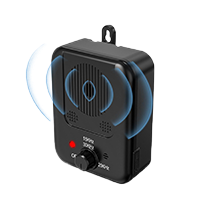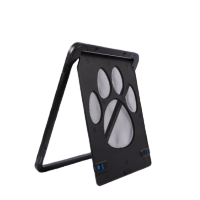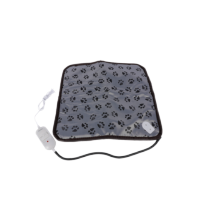Table of Contents
- Introduction
- Common Challenges Faced by Pet Owners with Screen Doors
- Types of Pet Doors for Screen Doors
- Installation Process
- Maintenance and Care
- Additional Considerations
- Koroz Pet Doors for Screen Doors
- Conclusion
- Frequently Asked Questions (FAQs)
Introduction
For pet owners, managing a screen door can be a constant hassle when their pets need to go in and out frequently. A pet door for a screen door offers a convenient solution, giving pets the freedom they need without requiring you to open and close the door every time. This simple addition to your home makes life easier for both you and your pet, offering a balance between comfort and functionality.
Common Challenges Faced by Pet Owners with Screen Doors
Pets and screen doors often don’t mix well, especially if your pet is energetic or anxious. Here are some common problems pet owners encounter with screen doors:
| Challenge | Impact on Owners & Pets |
|---|---|
| Constant interruptions | Pets frequently ask to go in and out, leading to owners constantly needing to stop what they’re doing. |
| Damage to screen doors | Pets may scratch, push, or chew on screen doors, resulting in tears, holes, and expensive repairs. |
| Supervision requirements | Without a pet door, owners have to monitor their pets closely to let them in or out when needed, which can disrupt the household routine. |
Installing a pet door for your screen door solves these issues by providing easy access for your pet and reducing the wear and tear on your screen door.
Benefits of Installing a Pet Door for Screen Doors
Here’s how a pet door can make life easier for both pets and their owners:
- Freedom for pets: Pets can move in and out without needing help, reducing anxiety and frustration for them.
- Convenience for owners: No more getting up to let your pet in or out multiple times a day.
- Preservation of the screen door: Prevents damage from pets clawing or pushing against the door.
- Secure closure: Modern pet doors are designed with secure closures, ensuring that insects and debris stay outside.
Types of Pet Doors for Screen Doors
Not all pet doors are the same. Depending on your needs, different types of pet doors are available for screen doors. Each type offers unique features and benefits, so it’s important to choose the one that best fits your home and pet.
| Type of Pet Door | Key Features |
|---|---|
| Magnetic Pet Doors | Uses magnetic closures to automatically seal the door after your pet passes through. Ideal for preventing bugs or drafts from entering. |
| Flap Pet Doors | A flexible flap that pets push open to enter or exit. A classic, cost-effective option that works well for small to medium-sized pets. |
| Sliding Pet Doors | Designed for sliding screen doors, these pet doors integrate smoothly into the door frame, providing easy access without hindering the door’s function. |
Considerations for Choosing the Right Type
When choosing a pet door for your screen door, consider the following factors:
- Size of your pet: Ensure the door is big enough for your pet to pass through comfortably.
- Type of screen door: Some pet doors are better suited for hinged doors, while others are designed for sliding doors.
- Durability: If you have a large, energetic pet, you may need a more robust, heavy-duty pet door.
- Security: Consider doors with locking mechanisms or automatic closures to prevent unwanted animals from entering your home.
By assessing these factors, you can make the best choice for your home and your pet.
Installation Process
Once you’ve selected the right pet door, the next step is installation. Many pet doors are designed for easy DIY installation, meaning you can have your pet’s new door up and running in no time.
Tools and Materials Required:
- Measuring tape
- Utility knife
- Screwdriver
- Pet door kit (including screws, frames, and flap or magnetic closure)
Step-by-Step Installation Guide:
- Measure your pet: First, measure your pet’s height and width to choose the appropriate door size.
- Mark the area: Use a measuring tape to determine where the pet door should be installed on the screen door. Mark the dimensions clearly.
- Cut the screen: Use a utility knife to carefully cut the screen where the door will be placed.
- Install the pet door frame: Align the pet door frame with the cutout and secure it with screws or clips.
- Test the functionality: Make sure the door swings open and closes smoothly. Check the magnetic or flap closure to ensure it seals correctly.
Tips for Ensuring Proper Fit and Function:
- Double-check the measurements before cutting into the screen to avoid making errors.
- Ensure the magnetic seal or flap aligns properly to prevent any gaps that could let in bugs or drafts.
- If your screen door is delicate, consider reinforcing the surrounding area with screen clips or additional support.
Maintenance and Care
Installing a pet door is just the beginning; regular maintenance is essential to ensure its longevity and functionality. Keeping your pet door clean and in good working order not only enhances its performance but also ensures the safety and comfort of your pet.
Regular Cleaning and Maintenance Tips
- Routine Cleaning:
- Flap Maintenance: Clean the flap regularly using a mild soap solution and a soft cloth. This prevents dirt buildup and ensures a clear path for your pet.
- Frame Inspection: Periodically check the frame for any wear or damage. If you notice scratches or cracks, consider repairing or replacing parts as needed.
- Check for Gaps:
- Regularly inspect the seals and closures to make sure there are no gaps that could let in drafts or bugs. Adjust or replace seals as necessary.
- Seasonal Checks:
- Before the onset of winter, ensure the pet door seals tightly to prevent heat loss. Conversely, check for proper ventilation in summer.
Addressing Common Issues and Troubleshooting
Even the best pet doors can face issues over time. Here’s how to troubleshoot some common problems:
| Issue | Potential Causes | Solutions |
|---|---|---|
| Flap won’t close properly | Dirt or debris in the frame or misalignment | Clean the frame and ensure the flap is aligned correctly. |
| Pet door is difficult to open | Strong magnetic closure or dirt buildup | Clean the flap area and apply lubricant to the hinges. |
| Insects entering through gaps | Damaged seals or improper installation | Inspect seals and replace if damaged. Reinstall if needed. |
| Pet refuses to use the door | Fear of the flap or unfamiliarity | Encourage your pet with treats and positive reinforcement. |
Additional Considerations
While choosing and installing a pet door, several additional factors can enhance the experience for both you and your pet.
Pet Size and Breed Compatibility
- Sizing Up: Ensure the pet door is appropriate for your pet’s size. A door that is too small can discourage use, while one that is too large may not provide the necessary security.
- Breed Considerations: Some breeds are more cautious than others. For example, small or timid breeds may need encouragement to use a flap door, while larger breeds may be more comfortable with a sturdy design.
Security Concerns and Potential Solutions
- Locking Mechanisms: Many modern pet doors come with built-in locking mechanisms. Ensure that your chosen door has a reliable locking system to keep your home secure when not in use.
- Automatic Locking: Consider pet doors with automatic locking features that engage when the pet door is closed. This adds an extra layer of security when you’re not home.
- Reinforced Frames: Opt for doors with reinforced frames to deter any unwanted intruders from entering your home.
Energy Efficiency and Insulation Impact
- Insulated Pet Doors: Choose pet doors that are designed to be energy-efficient. Look for models with dual flaps or weather stripping to minimize heat transfer.
- Placement Considerations: Install the pet door in areas that don’t directly face harsh weather conditions. This helps maintain your home’s internal temperature and improves energy efficiency.
- Regular Inspections: Conduct seasonal checks to ensure that seals are intact and there are no drafts. This helps in keeping your energy bills low while providing comfort for your pets.
Koroz Pet Doors for Screen Doors
| Product Model | Size (External) | Size (Internal) | Features | Material | Weight |
|---|---|---|---|---|---|
| CWM004 | S:29 x 24×1 cm L:43x37x1cm | S: 24 x 19cm L: 37cm*31cm | Lockable, automatic closing, easy install | ABS | S: 0.26kg L: 0.59kg |
| CWM005 | S: 28.8x23.8x1cm L: 35.1 x 45.7 cm | L: 30.5 x 40.6 cm | Magnetic flap, double-sided locking | Plastic | S: 0.25kg L: 0.65kg |
| CWM006 | S: 24cm*29cm L: 42 x 37 cm | L: 36cm*31cm | Self-closing, durable, user-friendly | ABS | S: 0.35kg L: 0.65kg |
| CWM011 | L: 50.0 x 40.2 x 3.3 cm S: 29.2 x 26.2 x 3.3 cm | L: 44.0 x 34.0 x 3.3 cm S: 24.5 x 21.0 x 3.3 cm | Three control modes, robust security | ABS | L: 1.0 kg S: 0.4 kg |
Conclusion
Incorporating our pet doors for screen doors into your product range is a win-win for both retailers and pet owners. These products are designed for ease of installation and use, making them appealing to a broad customer base. Their lightweight design and compact packaging make shipping straightforward, offering good profit margins for wholesalers.
By stocking models like CWM004, CWM005, CWM006, and CWM011, you can cater to the increasing demand for reliable and convenient pet solutions. Let’s empower pet owners to give their furry friends the independence they crave while ensuring their homes remain secure. For more information on ordering and availability, feel free to get in touch!
Frequently Asked Questions (FAQs)
1. What is a pet door for a screen door?
A pet door for a screen door is a small entrance that allows pets to enter and exit freely through a screen door, providing them with independent access to the outdoors or other areas of the home without needing human assistance.
2. Are pet doors for screen doors easy to install?
Yes, most pet doors for screen doors are designed for easy installation. They typically come with all necessary hardware, and detailed instructions are provided to help you through the installation process.
3. What size pet door should I choose?
The size of the pet door should correspond to your pet’s height and weight. It’s essential to select a door that allows your pet to pass through comfortably. Refer to the product specifications for size recommendations.
4. Can these pet doors be installed on any screen door?
Yes, our pet doors are versatile and can be installed on various types of screen doors, windows, or even thin exterior doors. However, they are not suitable for thick aluminum or glass doors.
5. What materials are these pet doors made from?
Our pet doors are primarily made from high-quality ABS plastic, ensuring durability and longevity. They are designed to withstand regular use while remaining lightweight.
6. Are the pet doors secure?
Yes, our pet doors come with lockable features to ensure your pets can only go out when permitted. Some models include a magnetic closing mechanism that helps keep the door securely closed when not in use.
7. How do I clean and maintain the pet door?
Regularly check and clean the pet door to prevent dirt buildup. Use mild soap and water for cleaning. Inspect the door for any signs of wear or damage, especially the locking mechanisms and flaps.
8. Can I use a pet door if I have multiple pets?
Yes, our pet doors are designed to accommodate multiple pets, but it’s crucial to ensure that the size is suitable for the largest pet in your household. Consider individual pet behaviors to determine compatibility.
9. Do you offer a warranty on the pet doors?
Warranty policies may vary by model. Please check the product specifications or contact our customer service for detailed warranty information on the pet doors.
10. Where can I purchase your pet doors for screen doors?
Our pet doors are available through various wholesale distributors. For more information on pricing, availability, and how to order, please contact us directly.





-4-1400x788.jpg)